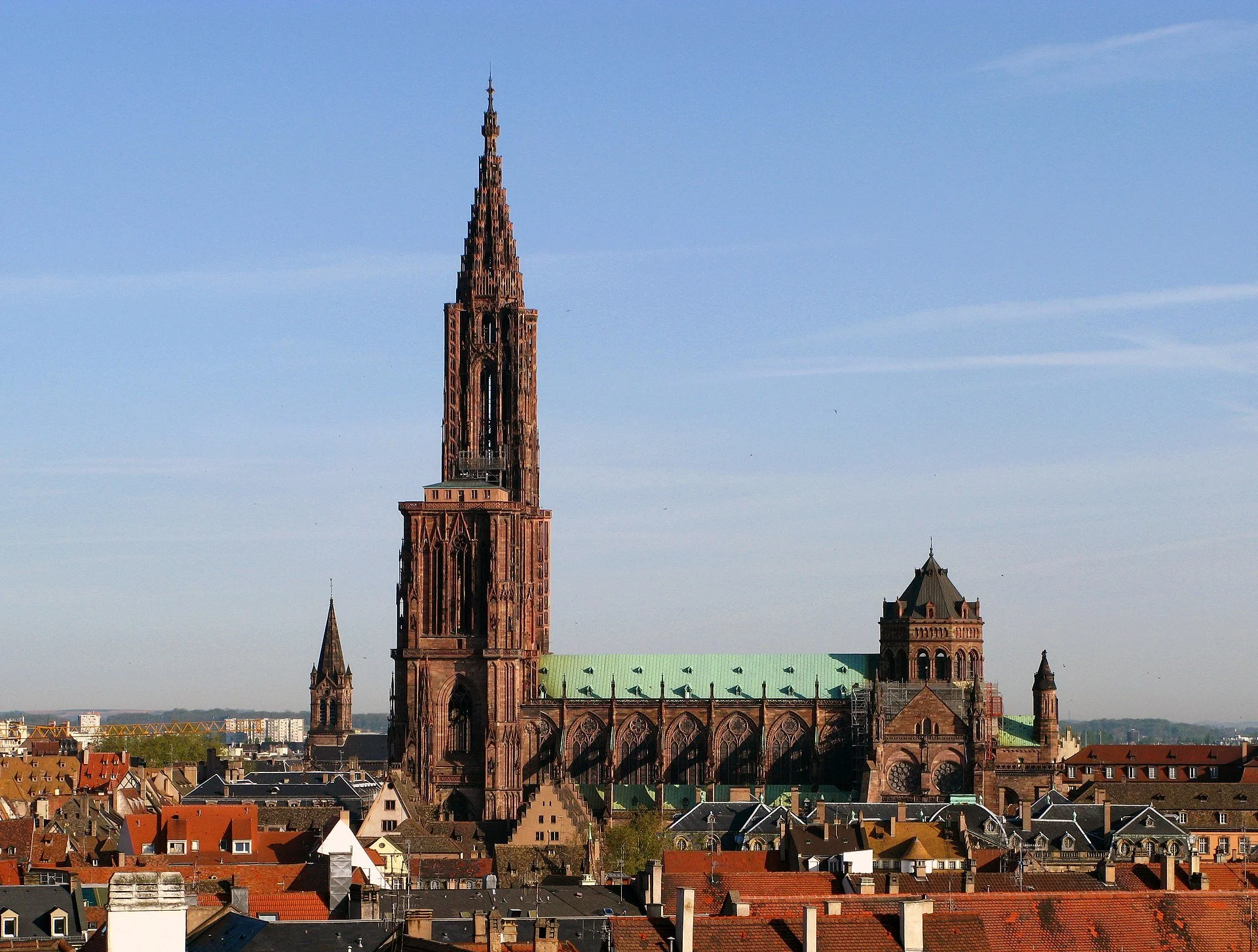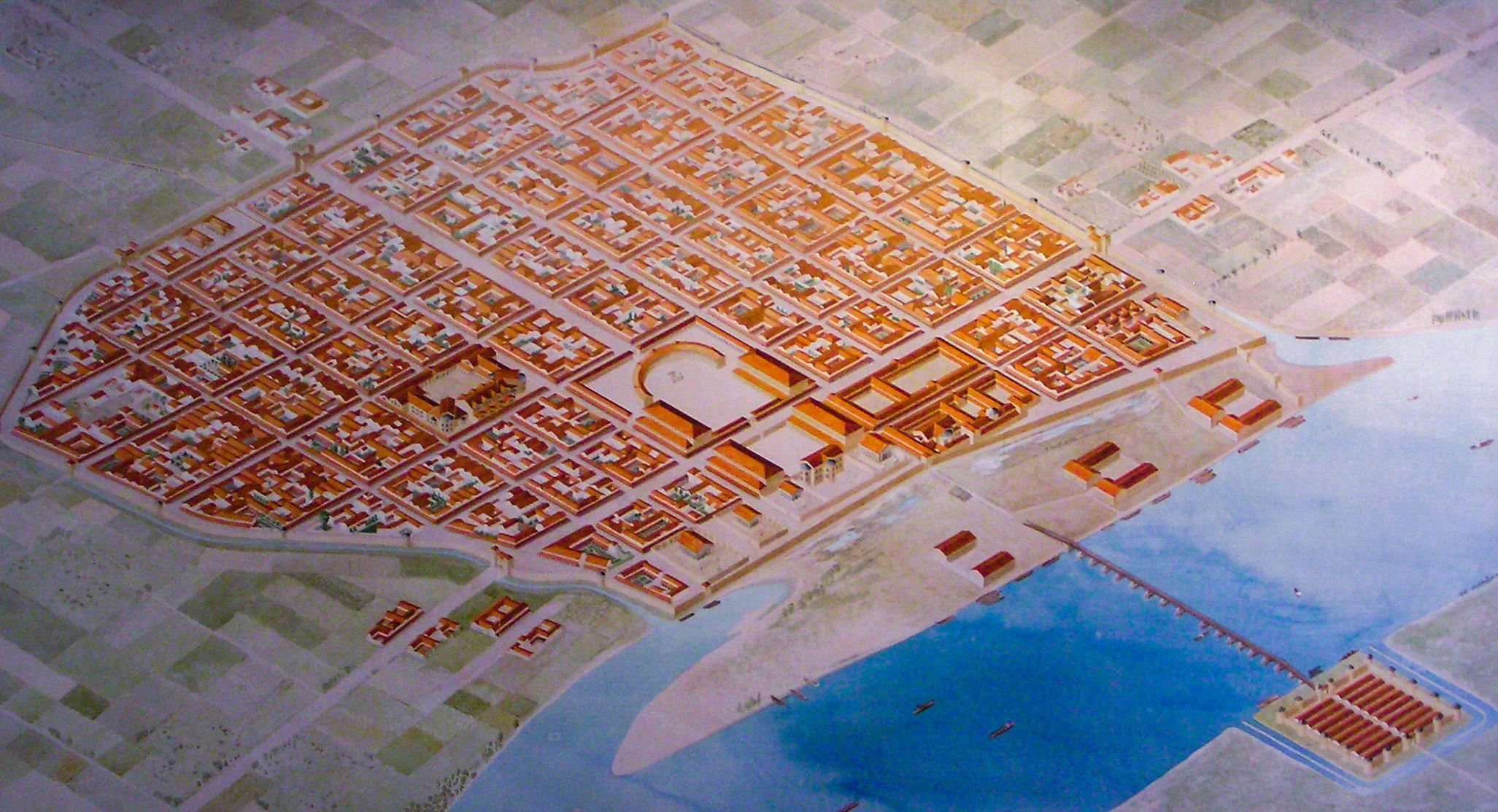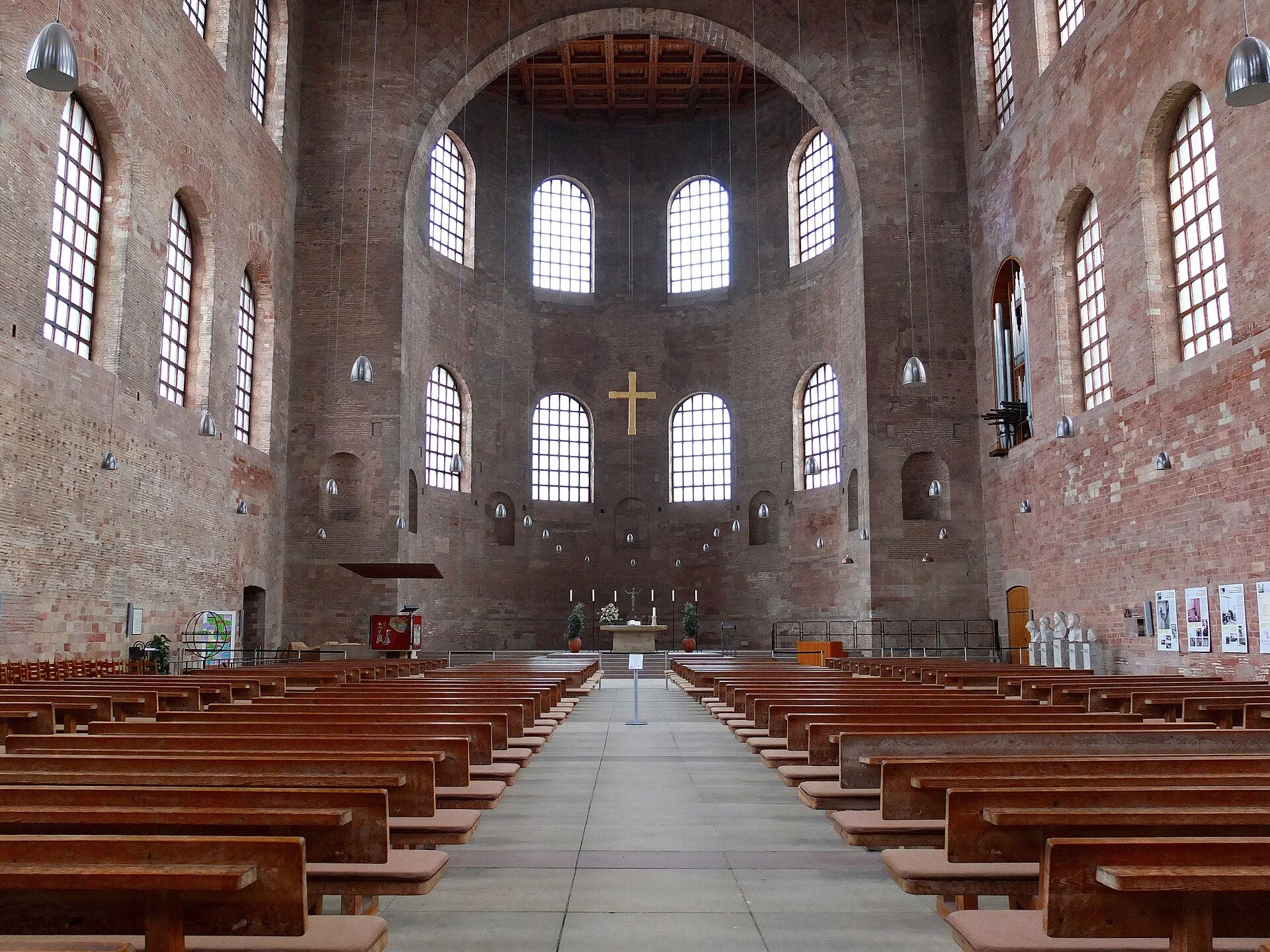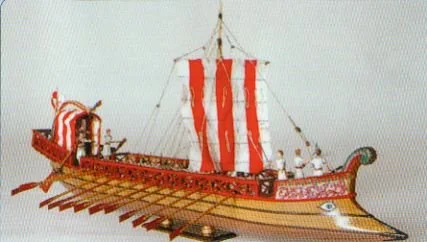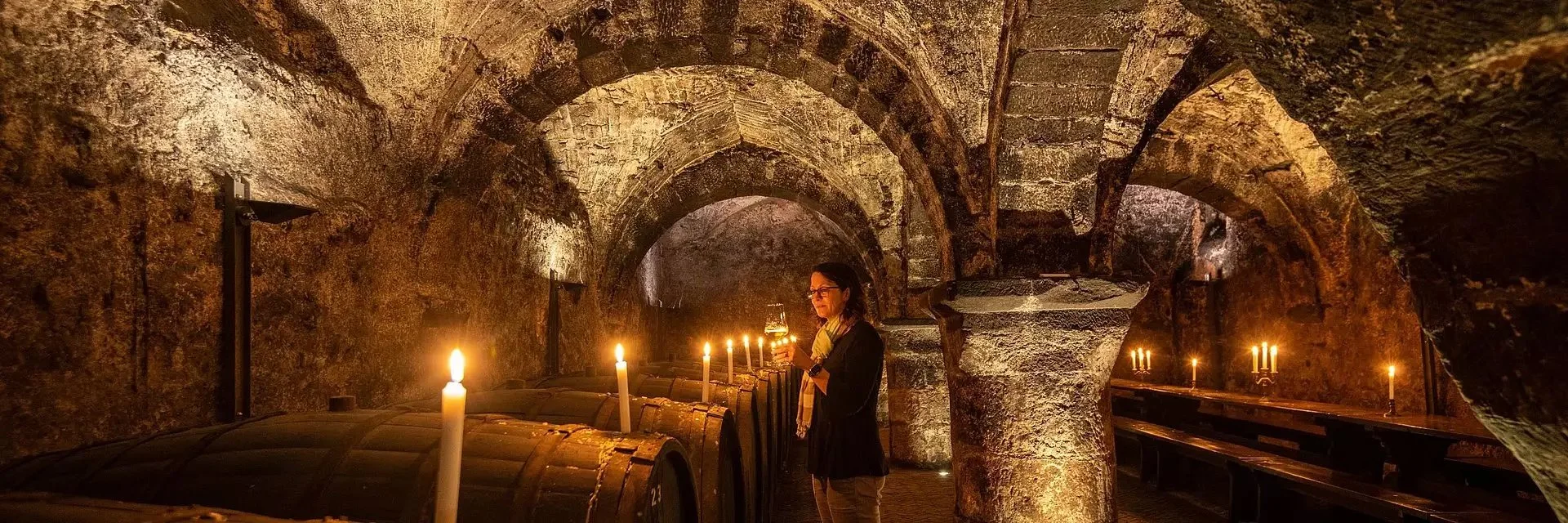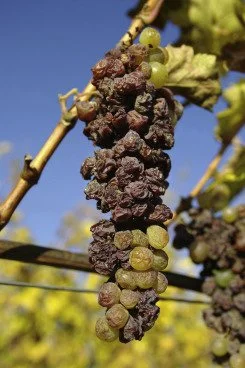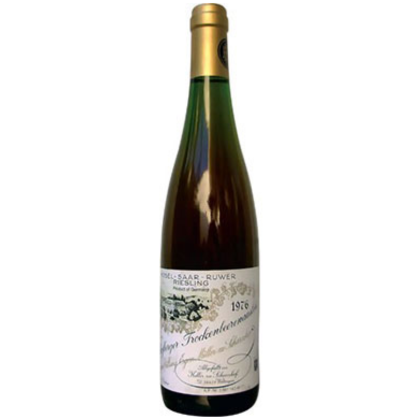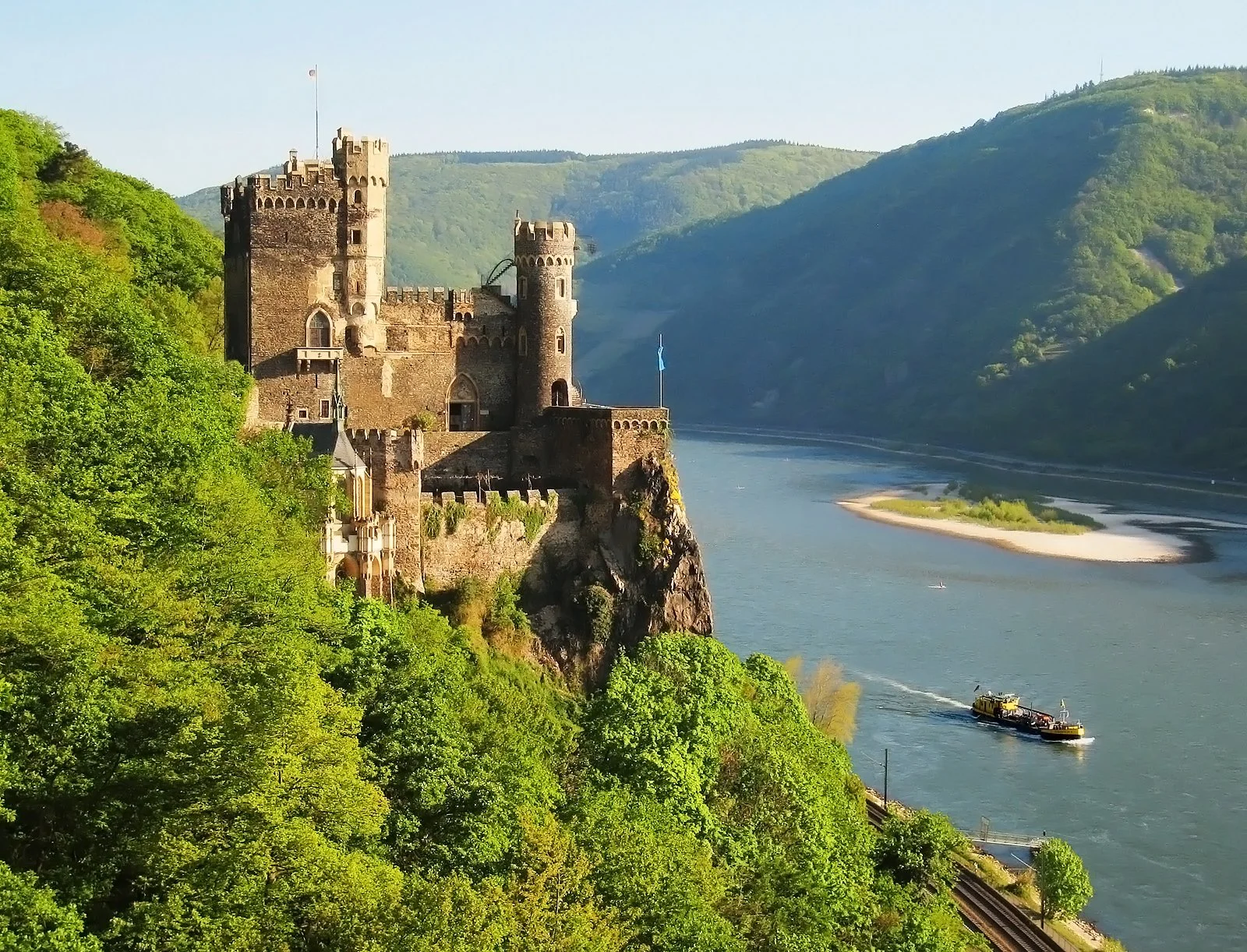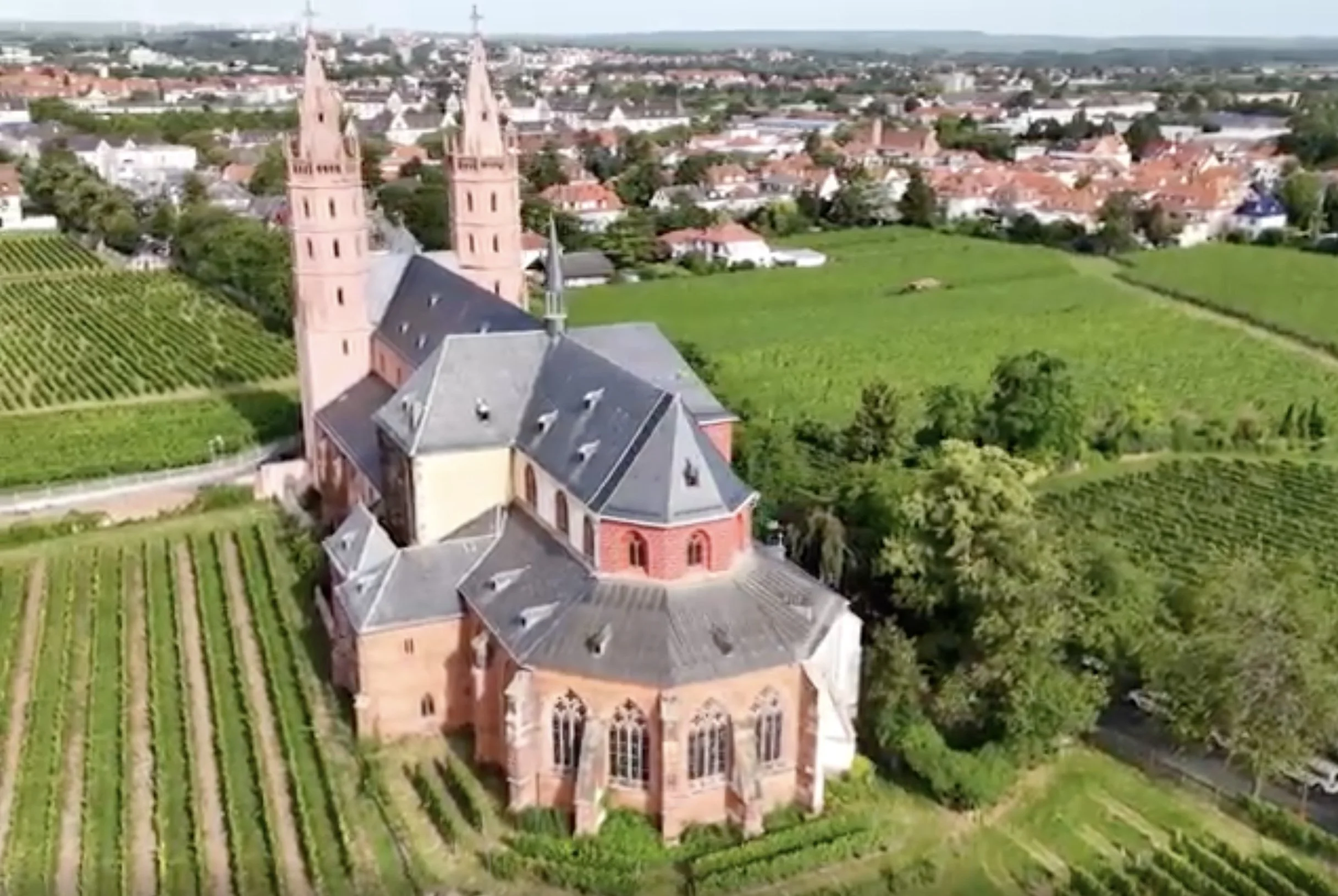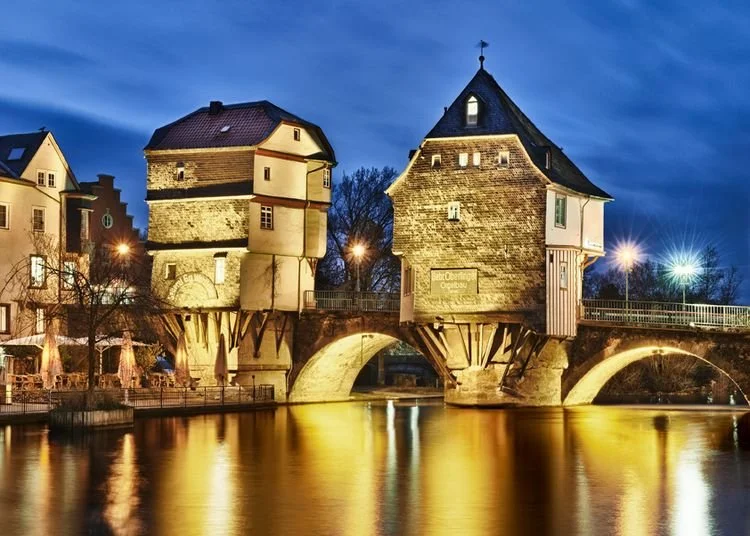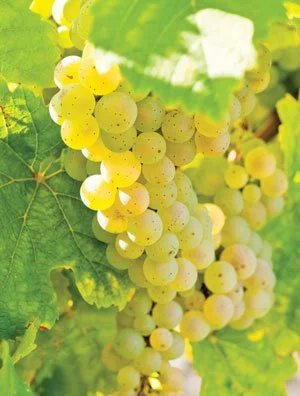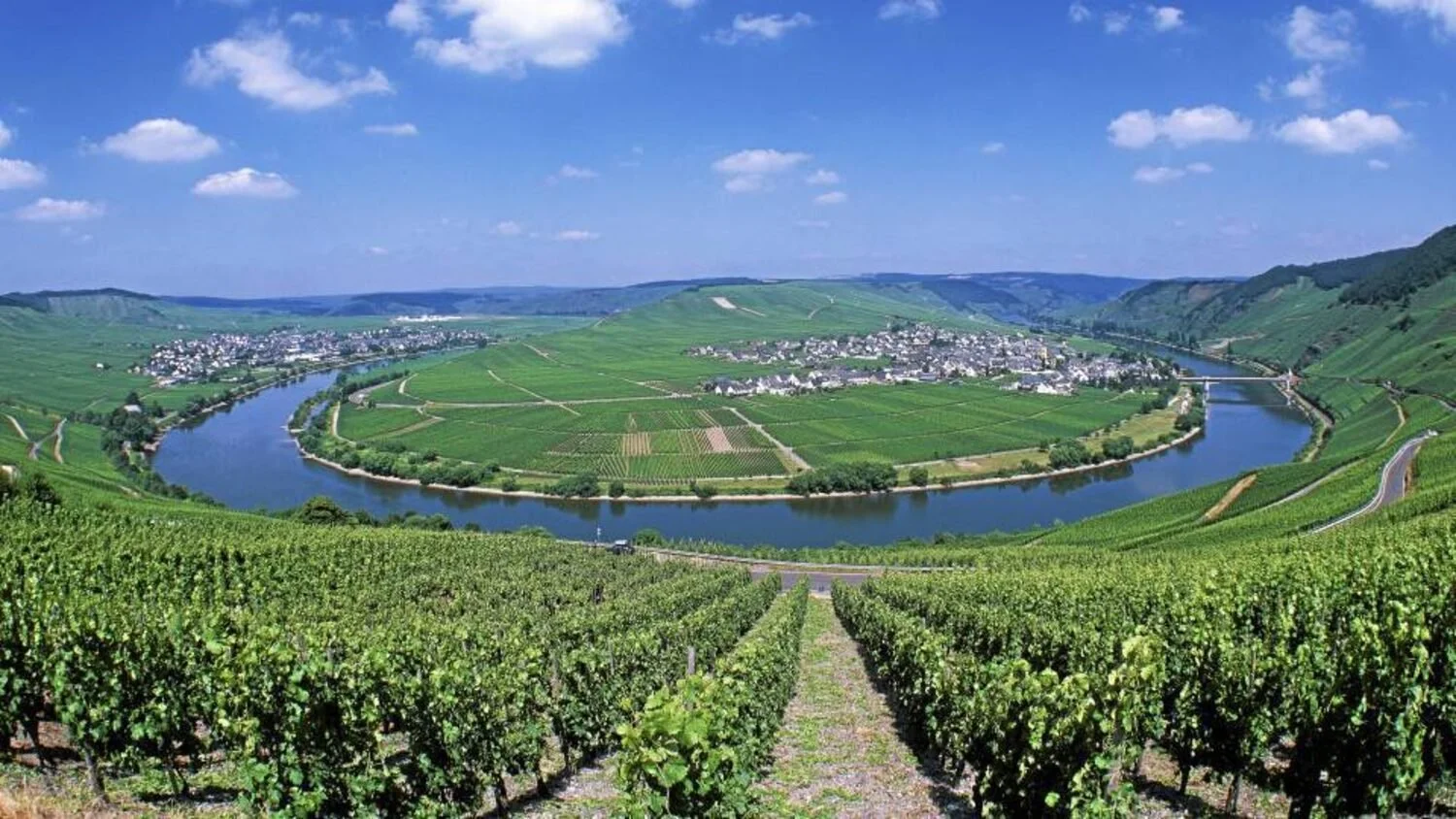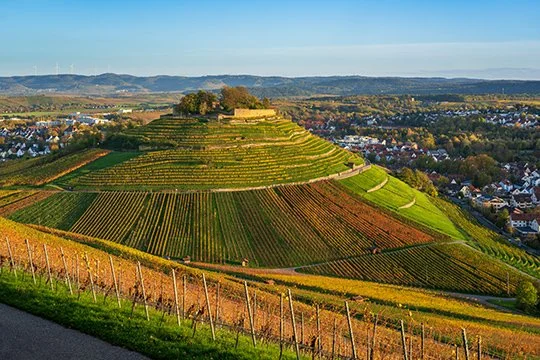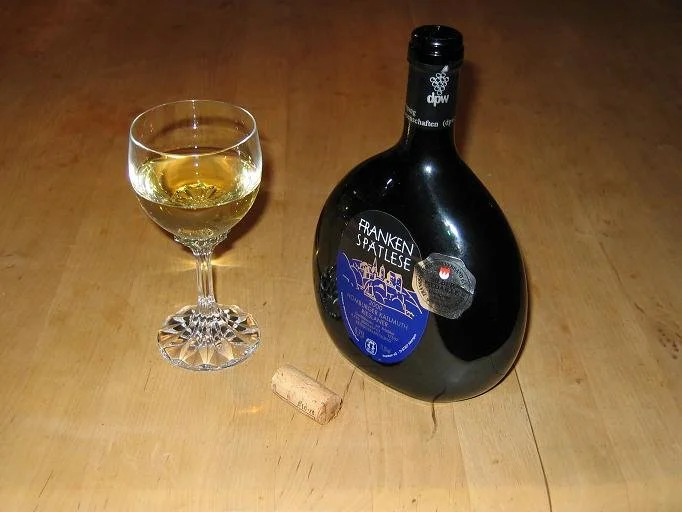Germany
Schloss Johannisburg in the Rheingau- the world’s first 100% Riesling winery. Photo credit
Germany & the rhine
Like much of Europe, Germany has been producing wine since the Romans introduced it 2,000 years ago.
The most important production regions are concentrated along the Rhine River and its tributary the Mosel (Moselle in France). Eight of the country’s 13 wine regions are located along or near the Rhine, one hugely important region is on the Mosel, one (Franken) is on the Main, another tributary of the Rhine, and one on the Ahr, a small river joining the Rhine below Koblenz. Only two are far from these major rivers, Sachsen to the east on the Elbe river near Dresden, and Saale-Unstrut, located in central Germany along the Saale and its tributary, above the Saale’s confluence with the Elbe near Magdeburg.
Germany’s 13 Wine Regions (courtesy Wine Folly)
Grape Varieties
Germany has some 250,000 acres under vine, about a tenth of that of France Italy, or Spain. But from that land, they produce about 1.3 billion bottles of wine- enough to float a small navy. 135 varieties are authorized in Germany. Most of the country’s production (about 65%) is white, with significant red production in Baden (32% of production is Pinot Noir) and the Ahr (tiny, but 65% Pinot Noir).
The most important grape is Riesling at 24% of plantings followed by
Muller-Thurgau 11%
Spatburgunder (Pinot Noir) 11%
Graubugunder (Pinot Gris) 8%
Dornfelder 7%
Weissburgunder (Pinot Blanc) 6%
Sylvaner 4%
All others are under 2.5% of total planted area.
“Did you know... Strasbourg’s name dates from the 5th Century, when Germanic tribesmen encountered the first paved streets (strasse) they’d ever seen, asked what such things were called in Latin (strata via- paved way - for the stratified layers of sand gravel and paving stone used in construction), and named the town “The City of Streets.””
Strasbourg Cathedral, the worlds tallest building from 1647 to 1874. Photo credit
Our Estates
Weingut Dr. Hermann (Mosel)
Weingut Karl Schaefer (Pfalz)
roman origins
The Rhine was a frontier, but also a very busy military highway for the Romans, and just like a modern army, the Roman army marched on its stomach. Vines were planted almost immediately around the major towns and legionary camps established by the Empire to supply its thirsty troops. Many of the major towns and cities of the middle Rhine are Roman, including Colonia Claudia Ara Agrippinensium (modern Cologne/Koln), founded as a legionary fortress and later the capital of Germania Inferior;
Colonia (Cologne) c. 50 AD
Castra Bonnensis (modern Bonn), built as a legionary fortress and today the largest fortress site known from the Roman world; Augusta Trevirorum (modern Trier) an Imperial capital city dedicated to the deified Augustus Caesar;
The Aula Platina in Trier, a basilica palace built by Emperor Constantine I (The Great) c. 300 AD. Photo credit
Castellum apud Confluentes (modern Koblenz) founded in 9 BC by Nero Claudius Drusus Germanicus at the junction of the Mosel with the Rhine (and partly to guard the crossing where Julius Caesar had bridged the Rhine in 55 BC); Mogontiacum (modern Mainz), founded as a legionary fortress also by by Drusus Germanicus in the 9 BC; Aquae Mattiacorum (modern Wiesbaden), established as a fortification and spa town (with recreation pools for the Romans’ cavalry horses, no less!) and later the the provincial capital of Germania Superior; and Argentoratum (modern Strasbourg), founded as a legionary camp around 12 BC, presently on the French side of the border.
All of this was supported and victualled by the Rhine Fleet, a naval force established in 13 BC, headquartered at Xanten in the North-Rhine Westphalia region of modern Germany, and maintained for four centuries.
A Roman Liburna (river fleet naval ship)
That’s a lot of military infrastructure, a lot of troops and the built-in demand for a lot of wine. Evidence suggests consumption of something on the order of a liter per day per person. Under the reign of Tiberius (AD 14-37), the frontier’s 8 legions would have been burning through some 16 million liters per year, and that’s just the regular army!
Today, the entire Rhine frontier and its vast military infrastructure is a UNESCO World Heritage Site.
The cellars at the Vereinigte Hospiten wine estate in Trier- built by order of Emperor Constantine I in 330 AD.
As Rome’s power receded, these regions fell under the control of the Franks, and evolved from a borderland to the central highway of the growing Frankish Empire. After Charlemagne’s death in 804, the Empire was divided among his three sons, which, after a few wars, settled into West Frankland (Francia Occidentalis, today’s France), East Frankland (Francia Orientalis, today’s Germany), and a central corridor of land stretching from Aachen (in today’s Belgium) up along the Rhine, across the Alps and down to Rome. This central section fell to Charlemagne’s eldest son Lothair, who inherited the Imperial title and whose name survives in the territory of Lorraine.
The Church blossomed in power and influence throughout the Middle Ages, and many of the great wine estattes of today originated as monastic and other ecclesiastical properties, while others belonged to landed nobility with their schlosser (castles) dotted along the Rhine.
Schloss Stolzenfels at Koblenz, guarding (and taxing) Rhine traffic since about 1250.
After a few more wars between the successors of Charlemagne, the central territory by then known as Lotharingia acceded to the Kingdom of East Francia in 925, and with Otto I (The Great)’s crowning in 962 as Holy Roman Emperor, the Rhinelands became firmly part of the German Kingdom and the Holy Roman Empire for some 700 years. In 1648, the Treaty of Westphalia ended the Thirty Years War, and Alsace-Lorraine passed under French control. The region remained French until The Germans took it back during the Franco-Prussian War, then returned to France after World War I, then was again returned to French control after World War II. Today the Rhinelands remain a border region, shared by, but no longer contested by, France and Germany.
Riesling, Germany’s greatest grape
The history of German wine is inseparable from its most important grape, Riesling. The variety is frequently referenced from the 14th Century onwards, and may have developed much earlier.
Riesling’s parentage is slightly obscure, but DNA fingerprinting shows that one parent is Weißer Heunisch (Gouais blanc), a variety that, while rare today, was widely grown by the French and German peasantry of the Middle Ages. The other parent is a cross between a wild vine and Traminer. Riesling was likeky born somewhere in the valley of the Rhine, since both Heunisch and Traminer have a long documented history in Germany.
Riesling’s first confirmed reference is a 1435 purchase order by Count John IV of Katzenelnbogen for 6 vines of “Riesslingen,” but Riesling really took off some 200 years later when the French, newly in control of Alsace, replaced most of the vines destroyed by war with Riesling. In 1720 Schloss Johannisburg in the Rheingau replanted all of its vines to Riesling, and by 1787 the Elector of Trier had declared that all “bad” vines in the Mosel should be ripped out and replaced by Riesling.
Koblenz, 1572: view across the Rhine and up the Mosel. Image credit
By the late 19th Century, German Riesling had a global reputation and routinely fetched prices comparable to those of the very finest Bordeaux and Burgundy. In 1900, Egon Müllers’ Sharzhofberger in the Mosel's Saar district won a Grand Prix at the Paris International Exposition. Riesling was at its acme and was Germany’s most widely grown variety.
Unfortunately the two World Wars destroyed many of Germany’s vineyards and after the destruction, the industry focussed on quantity over quality. The reputation of the wines crashed, exemplified by the famous Blue Nun brand.
But, the great estates replanted, and reestablished their tradition of making great Rieslings- true world-class wines. ln 1996, Riesling became once again Germany’s most widely-planted variety, and by the 2000’s great Riesling had regained its reputation as a global superstar.
Due to Riesling’s somewhat temperamental nature, much effort has been devoted to creating crosses that would marry the best aspects of Riesling with a greater tolerance for variation in climate and terroir. Some of the most notable include Müller-Thurgau, developed in the Geisenheim Grape Breeding Institute in 1882, which is a cross of Riesling and Madeleine Royale; and Scheurebe, created in 1916 by Dr. Georg Scheu (Riesling x Bouquet Blanc (Bukettraube) (which itself is a cross of Silvaner and Trollinger (aka Schiava Grossa, Vernatch). Another significant scion of Riesling is Rieslaner (August Ziegler, 1921, Riesling x Sylvaner); and Kerner (August Herold, 1929, Riesling x Trollinger).
The Rhine Gorge (yet another UNESCO World Heritage Site at Schloss Katz, the Lorelei in the background left. Credit
riesling classification
Deutcher Wein: The most basic designation for wine whose grapes originate in Germany.
Landwein: At least 85% of the grapes must originate in the Region (Anbaugebiet) named on the label. Typically dry.
Qualitatswein: Sometimes QbA for Qualitatswein bestimmte Angebaubiete on the label, must originate 100% from one district within one of the 13 Anbaugebiete, and the region must be declared on the label. They can only be made from grape varieties legally permitted in that region and must reach certain alcohol content as prescribed for the region, grape variety, and ripeness level.
Pradikatswein: Formerly Qualitastswein mit Pratikat (QmP), indicates a superior quality wine with special attributes, which must meet even more stringent requirements than Qualitätswein. Chaptalization, the use of oak chips, and dealcoholization are prohibited. A Prädikat, or special attribute, describes the ripeness of the grapes and the type of harvest. Each Prädikat is outlined below.
Kabinett wines are made from fully ripened grapes picked at normal harvest time. Typically lightly sweet. Fabulous apertif or main course wines, especially with south Indian, Thai, Indonesian, south Chinese cuisines…
Spätlese (late harvest) wines are made from riper grapes picked at a later stage in the harvest. The later grapes are harvested, the more sugar is able to develop in the grape on the vine. Typical Spatlesen are medium sweet but with great acidity, and still make great food wines.
Auslese (select harvest) indicates a wine made from hand-selected, very ripe grapes. Typicallly rich and fully sweet but with great balance. For dessert, with a cheese course, or with lighter desserts.
Beerenauslese (berry select harvest) wines are made from individually selected, overripe berries that usually were affected by noble rot. Because the individual grapes are hand-selected at harvest, no mechanical harvesting is permitted. These are expensive and rare, harvested only when exceptional weather conditions enable the grapes to ripen to this extent. They are notable for their longevity and can age for decades.
Trockenbeerenauslese (dry berry select harvest) wines wines are made from individually selected grapes that are overripe and have dried almost to raisins, and are infected by noble rot which helps the drying process. Also requred to be hand harvested, and can easily age gracefully for many decades.
Eiswein (ice wine) is made from grapes at least as ripe as Beerenauslese that have naturally frozen on the vine. They are harvested only under exact weather conditions, typically in the early hours before sunrise in late December or even into January and pressed while frozen. This extreme late harvest ensures the greatest possible ripeness, and the freezing removes even more water from the juice, leaving an unctious, superconcentrated wine.
Other terms indicating high quality are Gutswein, Ortswein, Erste Lage, Grosses Lage, or Grosses Gewächs. These terms are part of the classification system of the Verband Deutscher Prädikatsweingüter (VDP), an independent association of growers dedicated to the finest quality. In some cases, you may see these terms alongside “Qualitätswein” or “Prädikatswein.”
Sweetness levels are driven by the Pradikat level unless the wine says Halbtrocken (half-dry, in reality quite dry), or Trocken (bone dry). Feinherb is also used on some wines to indicate a lightly off-dry style.
The oh-so-Teutonic label of a Freiherr Langwerth von Simmern Hattenheimer Nussbrunnen 2005 Riesling Beerenauslese. The Von Simmern family has owned the estate since 1464.
Riesling is also susceptible to Edelfaule (liaterally noble rot, pourriture noble, botrytis cinerea) and produces some of the world’s great dessert wines. Richer dessert wines often show rich notes of candied fruit, butter and caraway as they age.
Riesling showing Edelfaule
Egon Muller’s 1976 Scharzfofberg TBA, currently available at $18,999.00 per bottle.
the 13 wine regions of germany: the Rhine
Cologne Cathedral (founded 1248 completed 1880), one of the world’s tallest cathedrals. photo credit
The Ahr: a tiny district of some 1378 acres located along the Ahr River, a small tributary of the Rhine. Best known for Spatburgunder (Pinot Noir)
Mittelrhein: 71 miles of river, 1110 acres of vineyard, stretching from roughly Koblenz upstream to Bonn. The entire Middle Rhine Gorge is a UNESCO World Heritage Site. Riesling dominates at 64%, with Pinot Noir a distant second at 10%. The wines, while often superb, are rarely seen outside of Germany.
Burg Rheinstein, Middle Rhine Gorge (photo credit)
Rheingau: Located along a stretch of the Rhine where it flows nearly due west for about 18 miles from Wiesbaden, the districts south-facing vineyards produce some of the Rhine’s most compelling wines. Schloss Johannisburg is one of the many superb estates perched above the river on this stretch which hosts such legendary wine towns as Eltville, Rauenthal, Winkel and Rudesheim. 2187 acres, 78% Riesling, 12% Spatburgunder.
Kloster Eberbach, an important wine estate in the Rheingau. Photo credit
Rheinhessen: a vast district of rolling hills to the south of the Rheingau and to the southwest of the river itself, including some 66,120 acres of vineyard plantings along with orchards, cereals and other crops. Grape cultivation is a mix of Muller-Thurgau (the plurality planting), Riesling, Sylvaner, Dornfelder and others. Easier viticulture, higher yields, moderate quality (with superb exceptions) and generally lower pricing.
The Liebfrauenkirsche (Church of Our Lady) in Worms, Rheinhessen; whose vineyards produced the original Liebfraumilch.
Nahe: just to the west of the Rheinhessen, along the Nahe River, a small tributary of the Rhine. 10270 acres of vineard, 27% Riesling with a wide variety of other grapes in use. The soils are predominantly volcanic with areas of sandy-loamy character. The three main wine areas are centered on the spa towns of Bad-Sobernheim, Bad-Munster and Bad-Kreuznach, with Kreuznacher wines being the best known from the region.
Medieval Bruckenhauser on the Alte Neubrucke over the Neckar, Bad-Kreuznach, Baden.
Pfalz (formerly Rheinpfalz): The Palatinate- home of the Imperial Prince-Elector. This district, located on the west bank of the Rhine just north of Alsace, is one of Germany’s most important districts for quality wine. Stretching for 50 miles along the banks of the Rhine and with some 58,560 acres of vineyard, the region is planted to about 25% Riesling but allows a whopping 45 white varieties and 22 red varieties in the appellation. One of the most warm, sunny and dry regions of Germany, it achieves high ripeness levels and is especially suited to red varieties. The geology, like that of adjacent Alsace, is highly varied with mostly volcanic or sandstone-derived soils. Major wine villages include Bad Durkheim, Forst and Wachenheim.
The Villa Wolf Estate in Wachenheim, Pfalz
Baden: a long, slithering wine district laying along the east bank of the Rhine opposite Alsace. With 39,300 acres of vine spread along 250 miles of the Rhine Graben, there is tremendous variability to climate and terroir. Riesling makes up a small percentage of vine here- actually the Pinot family dominates, with Pinot Noir at 375, Pinot Gris at 11% and Pinot Blanc at 7%.
Vineyards on Lake Constance, the southernmost vineyards in Baden and the southernmost in Germany. Photo credit
riesling’s flavor and style
“Anyone fortunate enough to have drunk great German riesling knows that it can be the finest white wine variety of all.”
Riesling is a very high-acid grape, and well adapted to cool climates with long ripening seasons. It thrives in the slate soils of the Mosel, the mixed terroirs of the Rhine Graben (Rheingau, Pfalz, Alsace) and nearby lands, does well in Austria and Alpine Italy, and has found its way as far as Australia’s Clare Valley, New York’s Finger Lakes, and Washington’s Columbia Valley.
At its best, Riesling has sweetness balanced perfectly by bracing acidity, notes of apple, pear, peach, and apricot, as well as floral notes of citrus blossom and honeysuckle.
The wine has a crystalline beauty that is supremely expressive of its terroir, letting every nuance of soil, site and sun gleam through. It’s also one of the world’s great food wines, pairing effortlessly with rich dishes as a bracing counterpoint, and against spicy cuisines such as South Indian, South Chinese or Thai.
As Riesling ages (and sometimes in young wines, especially from Germany), the wine can show notes of reductive, petrol-like compounds. This often throws first-time drinkers, but is just another layer of complexity to be savored and enjoyed. Chemically, that petrol quality is caused by the compound 1,1,6-trimethyl-1,2-dihydronaphthalene (TDN), which is created from terpenes by hydrolysis of fruit acids during the aging process.
TDN. The vertices and line ends represent carbon atoms
Terpenes are a broad class of organic compounds most notable for volatile aromas and are the reference note in turpentine (derived from pine sap, and whence the name of the underlying chemical class) as well as the reductive notes in some IPAs where certain strains of hops can contribute it.
the wine regions of germany: the mosel
The Mosel, including the Saar and Ruwer tributaries is one of the world’s great wine regions. The Mosel is a fairly long river, winding some 330 miles from its sources in the Vosges mountains northward through France, then Luxembourg, then Germany. The German part of the valley is divided into Upper, Middle and Lower sections, with the Saar and Ruwer sited within the Upper Mosel. Riesling rules the Mosel, comprising some 60% of total vineyard area. The valley is marked by its Devonian (400 million year old) slate soils, which drain away water but retain heat for ripening.
The Upper part is coolest and produces long-lived, bracingly acidic wines. The Middle is sun-drenched and includes the iconic villages of Graach, Wehlen, Zeltingen, Urzig and Erden. The Lower Mosel is a series of cut banks with vertigineous near-vertical sets of terraced vineyards, one of the most extreme viticultural regions in the world.
The vineyards of the famed Maximin Grunhaus estate, Ruwer Valley, Upper Mosel.
The Middle Mosel at Trittenheim
Terraces along the lower Mosel
The wine regions of germany: the central regions
Hessische Bergstrasse: with a mere 1150 acres, this is the smallest wine region in Germany. Planted to about 40% Riesling, 12% Grauburgunder (Pinot Gris) and 10% Spatburgunder (Pinot Noir),
Burg Frankenstein, Hesse. The inspiration for the legend.
Wurtemberg- a hilly region around the river Neckar and several of its tributaries, just north of Stuttgart. 28,440 acres of vine. Although Riesling is the plurality variety at about 15%, the region is actually planted to over 70% red grapes including Trollinger, Lemberger (Blaufrankisch), Spatburgunder (Pinot Noir) and Schwarzriesling (Pinot Meunier). 98% of Germany’s Trollinger vines are in Wurttemberg.
The Burgberg in Weinsberg, Wurttemberg
Franken: About 15,260 acres of vine mostly in Lower Franconia along the Main River and around the capital, Wurzburg, mostly in Bavaria. Sylvaner and Muller-Thurgau together make up about 50% of total production. The soils in Franken are unique with large areas underlain by the Muschelkalk- a Triassic (240-230 million years old) sequence of fossiliferous limestone and dolomite beds. In contrast the Steigerwald district of Franken is underlain by gypsum (CaSO4.2H2O). Both give a unique mineral signature to Franken wines which is one of the quality criteria against which every bottling is judged. Franken wines are typically bottled in the bocksbeutel- a flattened ellipsoid that is registered as a protected bottle shape in the EU.
The Bocksbeutel
The wine regions of germany: the east
Saale-Unsrut: a small area of only 1690 acres located on the slopes around the Saale and Unsrut rivers in eastern Germany, this district is planted to mostly white grapes, led by Muller-Thurgau, followed by Weisburgunder (Pinot Blanc) then Sylvaner and Riesling. First planted in AD 998, this is Germany’s northernmost wine region, it tends to produce crisp, high-acid versions. The wines tend to stay in the local market.
Naumburg Cathedral, Saale Unsrut- a UNESCO World Heritage site. Photo credit
Sachsen: 1140 acres of vine along the Elbe river near Dresden in Saxony. Soils of granite and gneiss, continental climate moderated just slightly by the nearby Elbe. This region, formerly in East Germany, was first planted to vines in the 12th century by the expanding Church. It saw expanded wine production after the reunification of Germany in 1990 but has been recently declining. Muller-Thurgau is the most important grape but at only 18%, no one grape has any dominance.
Schloss Moritzburg, outside Dresden, Sachsen.



